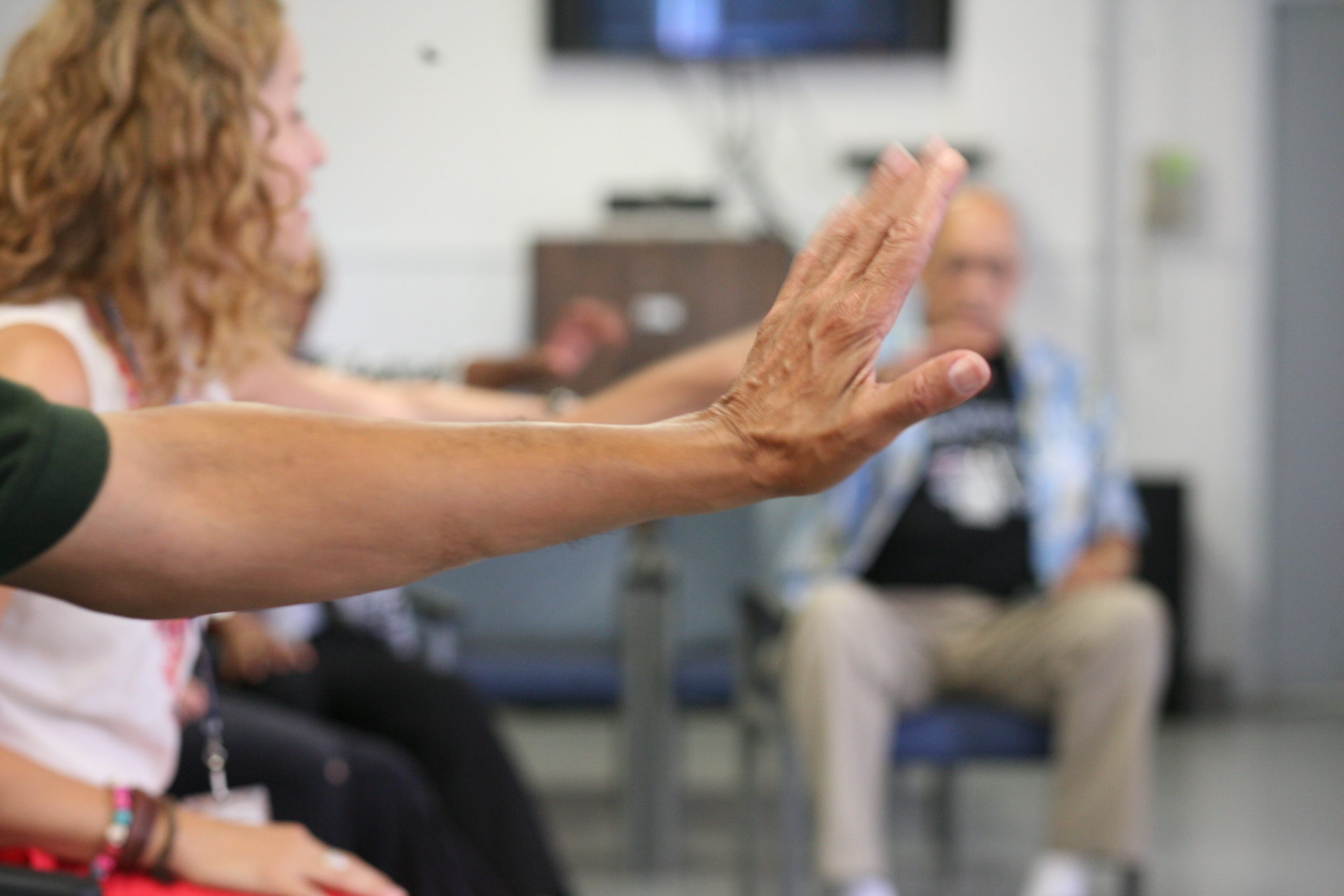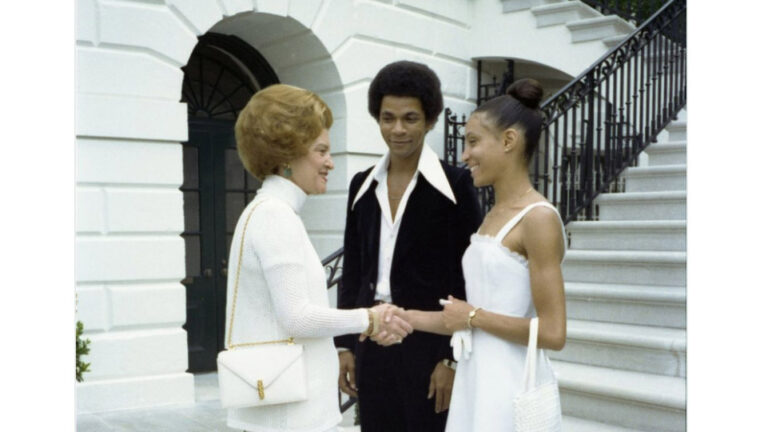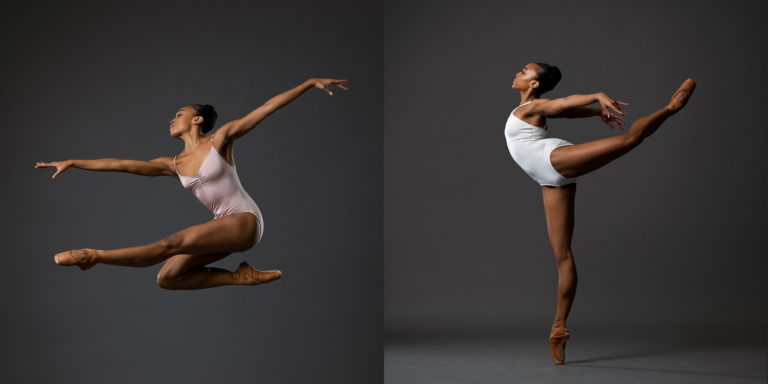
Dancing has never failed me. It was my lifeline growing up in an unsafe alcoholic home where I did not feel heard. It kept me afloat during my own alcoholism and eventual sobriety. It even pulled me through the dark tunnel of chronic back pain and deep depression.
Now, in this pandemic and the sea of awfulness that surrounds it, I look to dance to save me again. And even with all this evidence, all the faith I have built and invested in in dance as a lifeline, I still doubt. Will it save me this time? Surely this is a pack of troubles too heavy for dance to lift. But I am not dancing alone. I’m dancing with veterans.
Eleven years ago, dance educators Kristen Smiarowski, Sarah Wilbur and I were invited to partner with mental health professionals and co-create a dance program for veterans with mental illness. Since then, I have trained dozens of clinicians in the modality, serving veterans with conditions ranging from PTSD to chronic pain to memory loss. I have taught classes in conference rooms, cafeterias, lockdown psychiatric wards and therapy pools. During the pandemic, I’ve taught Dance for Veterans from my bedroom.
Even though I’ve been working with veterans for some time, before each class I doubt: Why dance? We all clearly have more important issues to deal with: Our health or lack thereof, financial losses, political chaos. Despite these thoughts, I log onto my computer and inevitably people show up, veterans ranging in age from 25 to 92, from all backgrounds.
They are also in their bedrooms or kitchens or living rooms. They are also tired, angry and lonely. Yet they are always ready to move, share and create. We collectively exhale. This may sound small, but it is powerful and profound. In a pre-pandemic class five or six years ago, our PTSD group was unexpectedly moved to a smaller room. The 20-plus Vietnam veterans were agitated by this change and began engaging in a dark game of one-upmanship, telling each other escalating war stories. The psychiatrist I partner with saw the group going off the rails. She abruptly told everyone to be quiet, turned to me and said: “OK, Christine, let’s dance now.” I thought to myself, “Oh boy, I hope this works.” It did: We began with that collective exhale and within five minutes we were smiling, laughing, moving and safely sharing the new, smaller space.
In this endeavor, I gratefully stand on the shoulders of movement pioneers Liz Lerman, Anna Halprin and Irmgard Bartenieff. Inclusivity and accessibility are at the forefront of the work. Veterans can sit, stand or lie down. Some have computers and smartphones and others call in from their landlines. Classes begin with a group check-in. We each offer one word and a gesture that reflects that word. Using a call-and-response model, we reflect the gesture back. Particularly during the pandemic, my mental-health-professional partners and I have stressed that we each come as we are. We breathe and practice mindfulness as a group to connect inward. We warm up using elements from yoga and qigong. We challenge our coordination with somatic principles from Bartenieff Fundamentals. We improvise using imagery and music. Our classes culminate in a collectively created work of dance. Borrowing from Lerman’s “Build a Dance” model, we make dances around a wide variety of prompts: what inspires us; what gifts we bring to the table. At the beginning of one class, a veteran was talking about how on her daily walks she had been seeing a lot of couches out for trash pickup. Her thought was that people are buying new couches since they were home all the time and wanted to be more comfortable. She then provided the group with a wonderful prompt: “I think we should make a dance about that today. What gives us comfort?”
The classes are designed to reach different groups: women veterans, elder veterans and veterans with severe mental health challenges. Three-quarters of the women in this program have experienced “military sexual trauma,” which is a military umbrella term for sexual harassment and assault. Building trust in the body with them is a tender process. Even so, I have found the women to be open-minded and willing to explore creatively with much fearlessness and courage. In this group I’ve incorporated versions of Halprin’s visual art exercises: creating self-portraits and collective drawings reflecting on identity.
With our elder veterans group, strengthening social connections during this time of isolation has been critical. Finding innovative ways for us to physically engage and connect with each other in our Zoom squares has been both challenging and worthwhile. In many ways it’s been more intimate than our in-person classes. On camera, we have seen each other’s pets, children and grandchildren. We have made dances inspired by the precious objects spotted in our rooms. We’re peeking through windows into each other’s lives in ways that could never happen in a multipurpose room.
One week, for instance, a veteran shared a photo of herself from when she was in the service. In the picture, she’s holding a banjo. I’d known this woman for years and had no idea that she played the banjo. When I shared this surprise, she said she “didn’t really play the banjo.” Huh? Apparently her unit’s band was short a banjo player, so her superiors gave her an order to learn the banjo, and so she did.
Another day we sang “Happy Birthday” to a veteran, and each offered a birthday dance in her honor. Through tears she told us how much this time together meant to her on her birthday that otherwise would have been spent alone.
The week before Christmas last year, we made a dance about what we are moving towards in the new year. One vet jumped across his frame shouting “freedom of expression,” with his arms out wide. Another stood up and walked slowly to his monitor and bowed saying “I’m moving towards healing.” It was a hopeful moment.
And now here we are in 2021, and the pandemic still rages on. One morning before class I woke up furious. Furious with everything: the world, the government, my family, myself. Even during our class’ opening check-in I said: “I’m angry.” And I shook my fists in front of me. The group, using our call-and-response form, shook their fists back at me. The flow of the class
continued. Al Green’s “Love and Happiness” was playing as we did a body-brushing practice, sweeping and brushing the surfaces of our body with our hands. The gripping anger was swept away. I had to tell myself, “Don’t cry, Christine. Keep it together, girl.”
After the song was over, I shared the experience with a relieved smile. In response, one of the vets confidently said, “See, I knew dancing would help.”
He had no doubt about it, so why should I? These intrepid veterans have taught me to hold dancing even closer than before. These men and women who have experienced trauma beyond my comprehension, but still have enough belief in the transformative power of movement to log into Zoom every week and dance with me in my bedroom. If my faith in dance ever falters, they are there to pick me up and remind me that it is my lifeline, my way back home.




